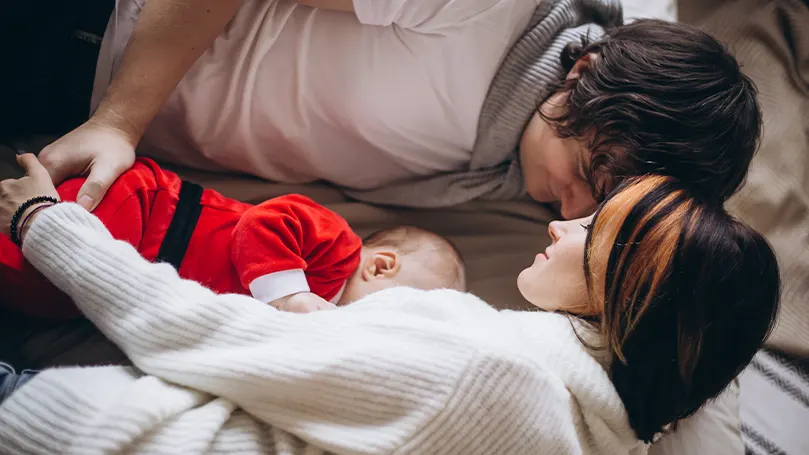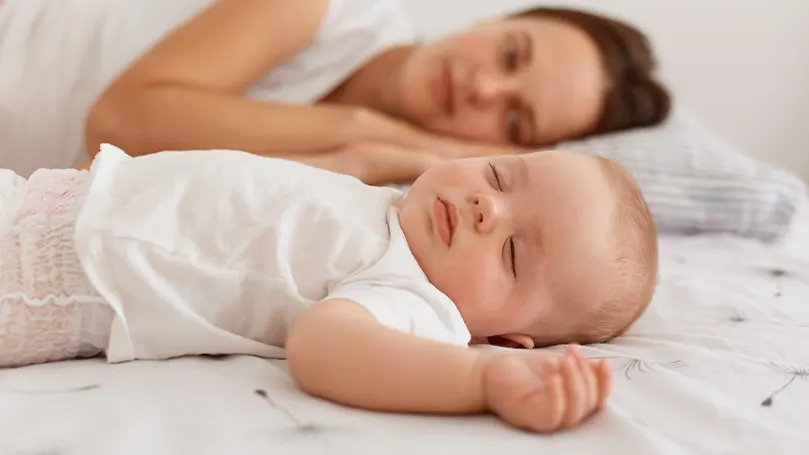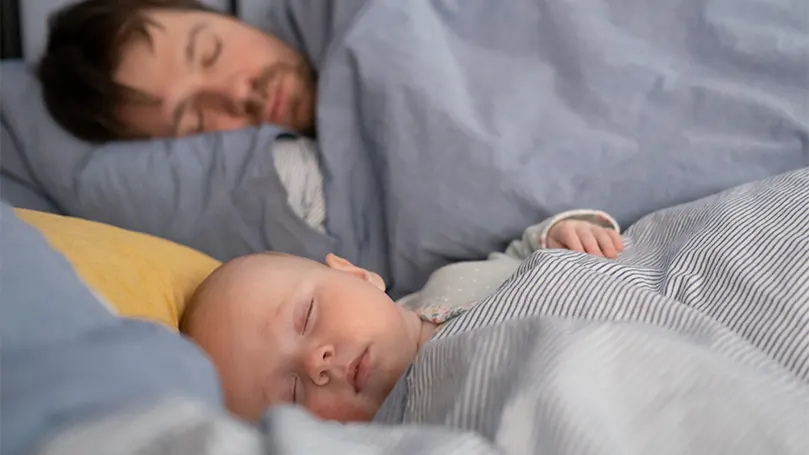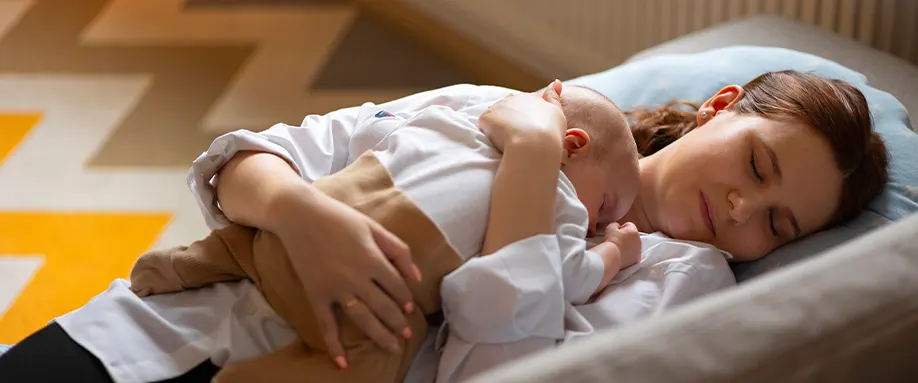What is co-sleeping
To be honest, co-sleeping with your baby can mean several things. Thus, before we go any further, let us first explain what this term can mean. Basically, co-sleeping can refer to several different sleeping arrangements.
- Bed Sharing – This is a sleeping arrangement when both parents and their baby sleep in the same bed. This term can also be called surface sharing because, sometimes, parents do not sleep in their family bed (adult bed), but rather on the couch, floor, or something third.
- Room Sharing – This is when both parent and their baby share the same room, but not the same bed. Parents get their own beds, while the baby sleeps in its own crib or in Moses' basket.
- Rooming In – This term refers to room sharing in the hospital right after the baby is born.

Is it safe to co-sleep with your baby?
Now you know all about different types of co-sleeping. And, you probably already know which one you want to choose for you and your baby (and your other children, older children). But, what you do not know is whether this ‘sleep environment' is safe for you all or not.
Well, according to the American Academy of Pediatrics, some types of co-sleeping are safe, but, others, are not. For instance, almost all paediatrics in the world advise parents to never bed share, but, they advise them to sleep in the same room especially for the first couple of months after the baby is born.

In some cultures, bed-sharing is encouraged. People from these cultures believe that sleeping in the same room and in the same bed lowers the risk of SIDS, or sudden infant death syndrome. However, in other cultures, parents believe that their babies will be at an elevated risk of getting hurt when co-sleeping.
What is best, is still not clear. So, our advice is to do whatever feels natural and comfortable for your baby, your partner, and yourself. However, if you do decide to have the baby sleep in your own bed, make sure you know all the risk factors and the safety tips.
Tips and precautions for safer co-sleeping
Whether sleeping during the night or having daytime naps, first, you should have an honest conversation with your partner. That is, make sure you are all on the same page when it comes to co-sleeping with your baby. If you are, then, pay attention to the following safety tips when trying to put a baby to sleep in together with you:
- Pay attention to your sleep surface – If you decide to share the same surface with your baby, that surface must not be soft. Infants are the safest when sleeping on firmer sleeping surfaces, thus, you better have a firm mattress. Avoid memory foam mattresses, air mattresses, or anything on the softer side.
- Make sure the sleeping environment is clean and clear – For a baby's safe sleep, you must make sure that the sleeping area is free of any clutter. And, by clutter, we mean loose bedding, pillows, duvets, blankets, toys, crib bumpers, etc. All of these things increase the risk of sudden infant death and injury.
- Put a sleeping baby on its back – Babies should always sleep on their back – this too lowers the risk of SIDS and injuries. Moreover, this helps the baby fall asleep faster.
- Pets and other children must be kept off the co-sleeping bed – Your older children and especially your pets can hurt the baby while sleeping. So, make sure the pets are kept outside of the room, and if you really have to co-sleep with your other child, make sure that the baby is not placed between the two of you.
- Pay attention to overheating – your baby should not be covered with the blanket and duvet you and your partner are using. That can lead to overheating, Instead, have your baby sleep in baby sleeping bags – these proved to be the best solution for sleeping babies.

Moreover, have in mind that co-sleeping means that your baby will get used to sleeping with you, in your own bed. So, when the time comes for all of you to stop co-sleeping, be prepared for a lot of sleep training. In other words, getting your baby used to sleeping in a crib might take some time, energy, and effort. Trust us, your baby will not want to sleep on its own after being around you so much.
Conclusion
As you have seen, co-sleeping with your baby has its pros and cons. But, in general, many parents believe that co-sleeping with their baby will lower the risk of infant deaths, encourage the children's development, and simply contribute to safe infant sleep and a stronger bonding experience.
Thus, if you want to co-sleep with your little one, do it. But, just as the research suggests, make sure you are always following the previously mentioned safe sleep guidelines.















There are no comments yet
"*" indicates required fields